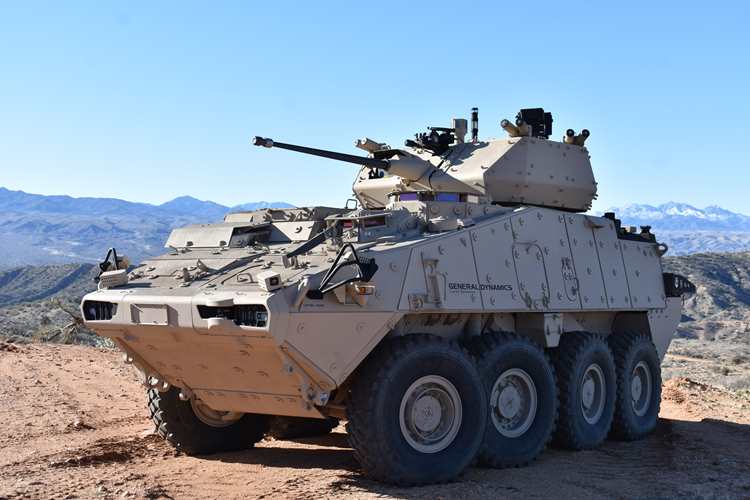The US Army is set to incorporate robotic combat vehicles capable of destroying enemy armoured vehicles and other key assets. Although it is several years away, the Army has been trying to bring robots on the battlefield and it is now closer to its vision.
In July, the US Army awarded the contract to Kongsberg Defence & Aerospace for Robotic Combat Vehicle-Medium (RCV-M) prototypes with its PROTECTOR Medium Caliber Remote Weapon Station (MCT-30).
“We’ll be delivering hardware and software kits that have a significant amount CROW’s technology refresh commonality,” Scott Burk, Kongsberg Defence’s vice-president for business development and government relations for US land systems, told Janes. “So … we’ll have common hardware, common fire control [and] common machine interface.”
The MCT-30 is a remotely controlled and operated from a protected position inside the vehicle compartment. The turret is accessed and reloaded from under armour. It has highly accurate firepower in moving and static scenarios along with enhanced lethality features through Integrated Combat Solution (ICS).

A 2019 Congressional Research Service report said that the Army plans to develop, in parallel, three complementary classes of Robotic Combat Vehicles (RCVs) intended to accompany the Optionally Manned Fighting Vehicle (OMFV) into combat both to protect the OMFV and provide additional fire support.
“For RCVs to be successfully developed, problems with autonomous ground navigation will need to be resolved and artificial intelligence must evolve to permit the RCVs to function as intended,” said the report.
The army intends to field three RCV classes – a light, medium, and heavy RCV-Light to be less than 10 tons, with a single vehicle capable of being transported by rotary-wing assets. It should be able to accommodate an anti-tank guided missile (ATGM) or a recoilless weapon.
RCV Medium is expected to be up to 20-tons with a single vehicle capable of being transported by a C-130 aircraft and should have a robust sensor package and be capable of integration with Unmanned Aerial Vehicles (UAVs).
The RCV heavy will weigh between 20 to 30 tons, with two vehicles capable of being transported by a C17 aircraft. It will also accommodate onboard weapon system capable of destroying enemy tanks and is considered to be a “nonexpendable” system and more survivable than the other RCVs.
“Robots have the potential to revolutionize the way we conduct ground combat operations,” Brig. Gen. Ross Coffman, director of the Next Generation Combat Vehicles Cross-Functional Team (NGCV CFT), said earlier in a statement.
“Whether that’s giving increased firepower to a dismounted patrol, breaching an enemy fighting position, or providing [chemical, biological, radiological, nuclear and explosive] reconnaissance, we envision these vehicles providing commanders more time and space for decisions and reducing risk to soldiers.”
According to Kongsberg, the main armament is a 30mm or Super 40mm automatic cannon equipped with a linkless ammunition handling system for increased reliability compared to traditional link fed cannon systems.
It further stated that it is easy to tailor the system to specific customer requirements, including add-on systems like anti-tank missiles, active protection systems, shot detection systems and laser warning systems. It can be configured as a single-user system or a dual user system including hunter-killer capability.
“The wireless fire control architecture fire control provides key building blocks to facilitate an AI capability. We are working on how AI will be employed within OMFV and RCV,” Scott Burk, vice president, Kongsberg Defense, told The National Interest in an interview.




